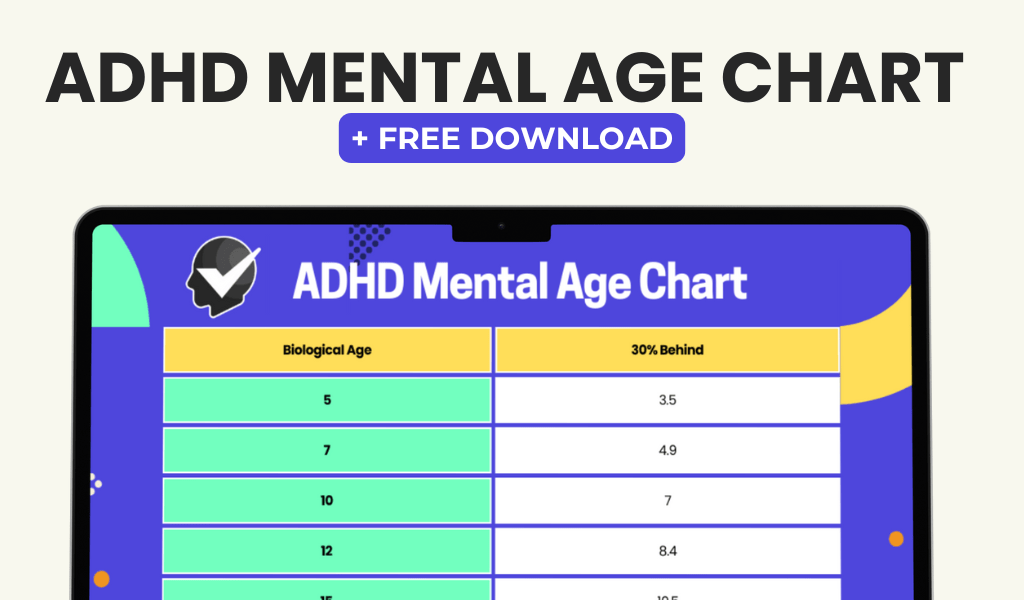Attention Deficit Hyperactivity Disorder (ADHD) has a long history of recognition, dating back centuries before its current nomenclature. In the 18th century, Scottish physician Sir Alexander Crichton described a condition he termed “mental restlessness” in his medical text. He noted symptoms such as inattention, impulsivity, and hyperactivity in certain patients.
The 19th century saw English physician Sir George Still documenting similar observations in children, noting that these behaviors were not attributable to obvious physical causes. The early 20th century marked a significant advancement in the understanding of ADHD. In 1902, Sir George Frederic Still delivered a series of lectures at the Royal College of Physicians in London, presenting his findings on children exhibiting inattention, impulsivity, and hyperactivity.
Importantly, Still proposed that these symptoms were indicative of a neurological condition rather than a result of poor parenting or lack of discipline. These early observations and discussions were instrumental in laying the foundation for the modern understanding and diagnostic criteria of ADHD. They represent the initial steps in recognizing ADHD as a distinct neurological disorder, separate from behavioral issues stemming from environmental factors.
Development of ADHD Diagnostic Criteria
Early Recognition and Initial Criteria
In 1968, the American Psychiatric Association (APA) officially recognized the disorder by including “hyperkinetic reaction of childhood” in the second edition of the Diagnostic and Statistical Manual of Mental Disorders (DSM-II). The initial criteria included symptoms such as overactivity, short attention span, and impulsivity.
Refining the Criteria and Introduction of Subtypes
The term “Attention Deficit Disorder” (ADD) was officially used to describe the condition in 1980, with the publication of DSM-III. This edition also introduced subtypes based on the presence or absence of hyperactivity. In 1987, the name was changed to “Attention Deficit Hyperactivity Disorder” (ADHD) in DSM-III-R to better reflect the core symptoms of the disorder.
Current Diagnostic Criteria and Subtypes
The criteria have continued to evolve, with the most recent version, DSM-5, including three subtypes: predominantly inattentive presentation, predominantly hyperactive-impulsive presentation, and combined presentation. These changes reflect a growing understanding of the complexity and variability of ADHD symptoms and presentations.
The Rise of ADHD Diagnosis and Treatment

The diagnosis and treatment of ADHD have seen a significant rise in recent decades. With a better understanding of the disorder and improved diagnostic criteria, more children and adults are being identified with ADHD. According to the Centers for Disease Control and Prevention (CDC), the prevalence of diagnosed ADHD in children has increased from 6.1% in 1997 to 10.2% in 2016.
This rise can be attributed to increased awareness and recognition of ADHD symptoms, as well as improved access to healthcare and mental health services. The increase in ADHD diagnosis has also led to a rise in treatment options. Stimulant medications such as methylphenidate (Ritalin) and amphetamine salts (Adderall) have become widely used in managing ADHD symptoms.
Behavioral therapy and counseling are also commonly used to help individuals with ADHD develop coping strategies and improve their functioning. The rise in diagnosis and treatment of ADHD has sparked debates and controversies surrounding overdiagnosis, medication use, and long-term outcomes for individuals with ADHD.
Controversies Surrounding ADHD
The rise in ADHD diagnosis and treatment has brought about several controversies and debates within the medical community and society at large. One of the main controversies is the concern about overdiagnosis and overmedication of ADHD. Some critics argue that ADHD is overdiagnosed, leading to unnecessary medication use and stigmatization of normal childhood behaviors.
Others raise concerns about the long-term effects of stimulant medications on brain development and behavior. Another controversy surrounds the use of non-pharmacological treatments for ADHD. Some argue that behavioral therapy and counseling should be the first line of treatment for ADHD, while others believe that medication is necessary for managing the core symptoms of the disorder.
Additionally, there is ongoing debate about the role of environmental factors, such as parenting styles and educational practices, in contributing to ADHD symptoms. The controversies surrounding ADHD highlight the need for continued research and dialogue within the medical community to better understand the disorder and improve diagnostic and treatment practices.
Evolving Understanding of ADHD in the Medical Community
The medical community’s understanding of ADHD has evolved significantly over time. What was once considered a behavioral problem resulting from poor parenting or lack of discipline is now recognized as a complex neurodevelopmental disorder with genetic and environmental influences. Advances in neuroscience have provided insights into the underlying brain mechanisms involved in ADHD, including differences in brain structure and function related to attention, impulse control, and executive functioning.
Research has also shown that ADHD is not limited to childhood but can persist into adolescence and adulthood. This understanding has led to a shift in diagnostic practices to include adults who may have been overlooked or misdiagnosed earlier in life. Additionally, there is growing recognition of the heterogeneity of ADHD presentations, with some individuals exhibiting primarily inattentive symptoms while others display hyperactive-impulsive behaviors.
The evolving understanding of ADHD has also led to a greater emphasis on a multimodal approach to treatment, including a combination of medication, behavioral therapy, education interventions, and support for families. This holistic approach recognizes that ADHD is not just a matter of attention and hyperactivity but also impacts various aspects of an individual’s life, including academic performance, social relationships, and emotional well-being.
ADHD Testing and Assessment Methods

Comprehensive Evaluation: Gathering Information from Multiple Sources
The diagnosis of ADHD involves a comprehensive evaluation that gathers information from multiple sources, including parents, teachers, and healthcare providers. This multi-faceted approach helps to ensure accuracy and reliability in diagnosis. Standardized rating scales are often used to assess symptoms related to attention, hyperactivity, and impulsivity.
Neuropsychological Testing: Assessing Cognitive Functioning and Executive Skills
Neuropsychological testing may also be conducted to assess cognitive functioning, executive skills, and academic achievement. This helps to identify specific areas of difficulty for individuals with ADHD and guides intervention strategies. By understanding an individual’s strengths and weaknesses, medical professionals can develop targeted interventions to address specific challenges.
Objective Measures: Continuous Performance Tests and Functional Neuroimaging
The use of objective measures such as continuous performance tests (CPT) and functional neuroimaging techniques has also been explored to provide additional information about attentional processes and brain function in individuals with ADHD. These advancements in testing and assessment methods aim to improve diagnostic accuracy and tailor interventions to meet the specific needs of individuals with ADHD.
The Future of ADHD Research and Treatment
The future of ADHD research and treatment holds promise for further advancements in understanding the disorder and improving outcomes for individuals affected by it. Research efforts are focused on identifying genetic markers associated with ADHD, exploring potential environmental risk factors, and investigating neurobiological mechanisms underlying the disorder. This may lead to the development of more targeted interventions and personalized treatment approaches based on an individual’s unique genetic and neurobiological profile.
In addition to biological factors, there is growing interest in understanding the role of psychosocial factors in ADHD, such as family dynamics, peer relationships, and educational experiences. This holistic approach recognizes that ADHD is influenced by a complex interplay of genetic, environmental, and social factors. The future of ADHD treatment may also see advancements in non-pharmacological interventions, including innovative behavioral therapies, educational accommodations, and technology-based interventions.
These approaches aim to address not only the core symptoms of ADHD but also associated difficulties such as emotional dysregulation, executive dysfunction, and academic underachievement. Overall, ongoing research and collaboration within the medical community hold promise for improving our understanding of ADHD and developing more effective strategies for diagnosis and treatment that can enhance the lives of individuals affected by this complex disorder.
FAQs
What is ADHD?
ADHD stands for Attention Deficit Hyperactivity Disorder. It is a neurodevelopmental disorder that affects both children and adults. Common symptoms include inattention, hyperactivity, and impulsivity.
Did ADHD exist 100 years ago?
The concept of ADHD as we understand it today did not exist 100 years ago. However, historical records suggest that symptoms similar to those of ADHD have been observed for centuries, albeit under different names and descriptions.
When was ADHD first recognized as a medical condition?
ADHD was first recognized as a medical condition in the early 20th century. It was initially referred to as “minimal brain dysfunction” and later as “hyperkinetic impulse disorder” before being officially termed ADHD in the 1980s.
How was ADHD treated 100 years ago?
Before the formal recognition of ADHD, individuals exhibiting symptoms of the disorder may have been treated for related symptoms such as hyperactivity or inattention. Treatments may have included behavioral interventions, dietary changes, and in some cases, sedatives or stimulants.
How has our understanding of ADHD changed over time?
Our understanding of ADHD has evolved significantly over time. Early perceptions of ADHD focused primarily on hyperactivity, while modern understanding recognizes the complex interplay of inattention, hyperactivity, and impulsivity. Additionally, research has led to the development of various treatment options, including behavioral therapies and medication.














